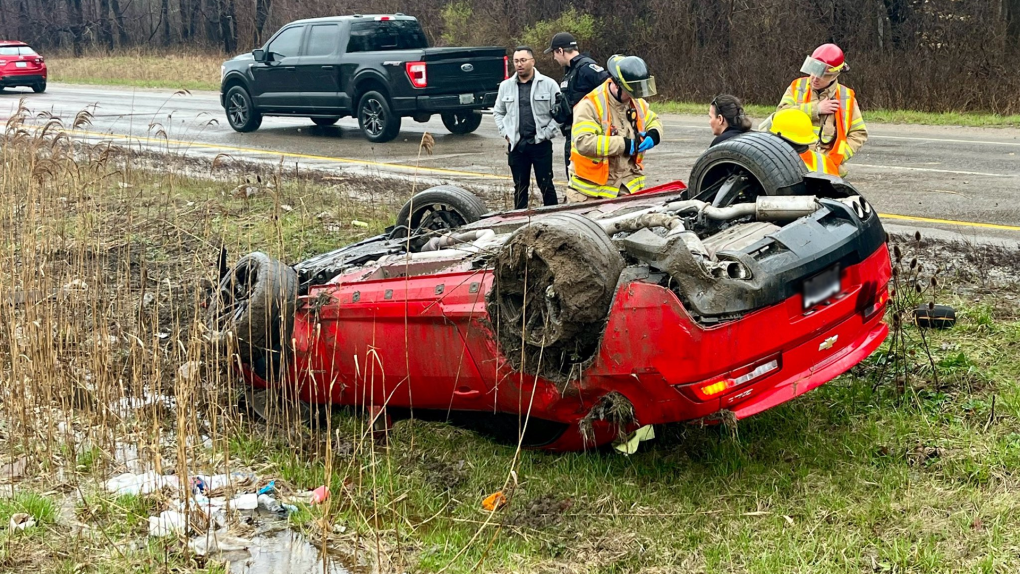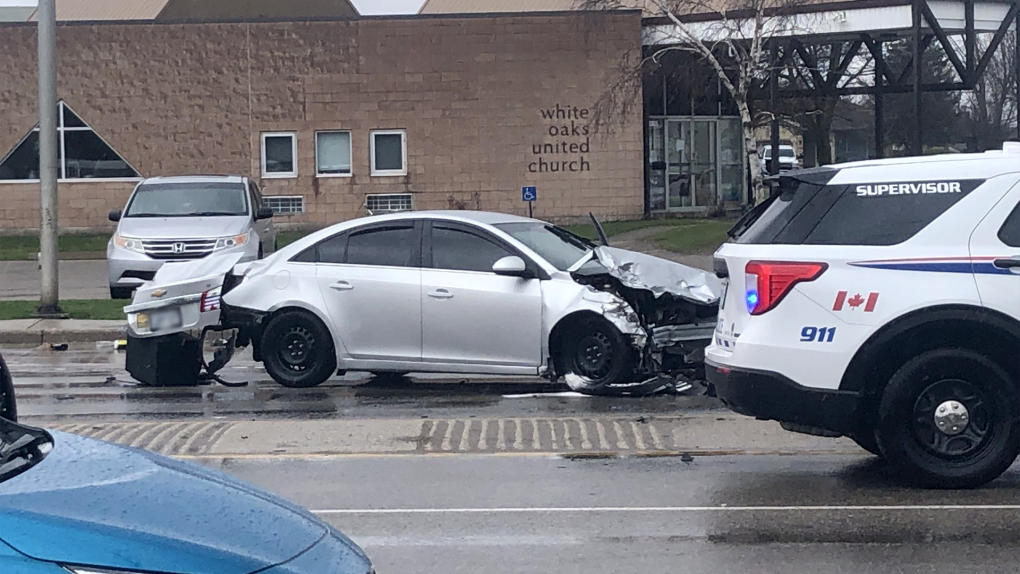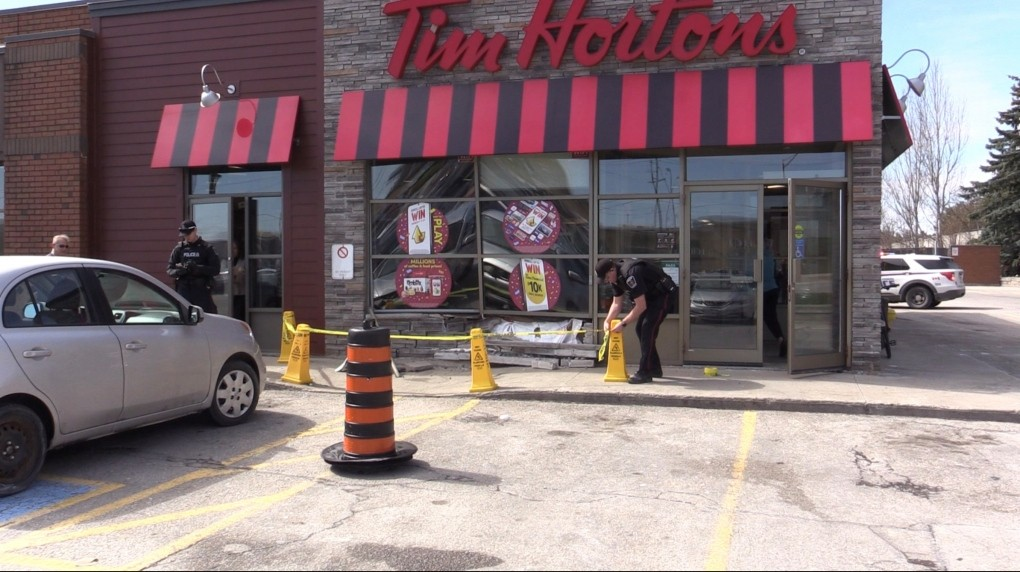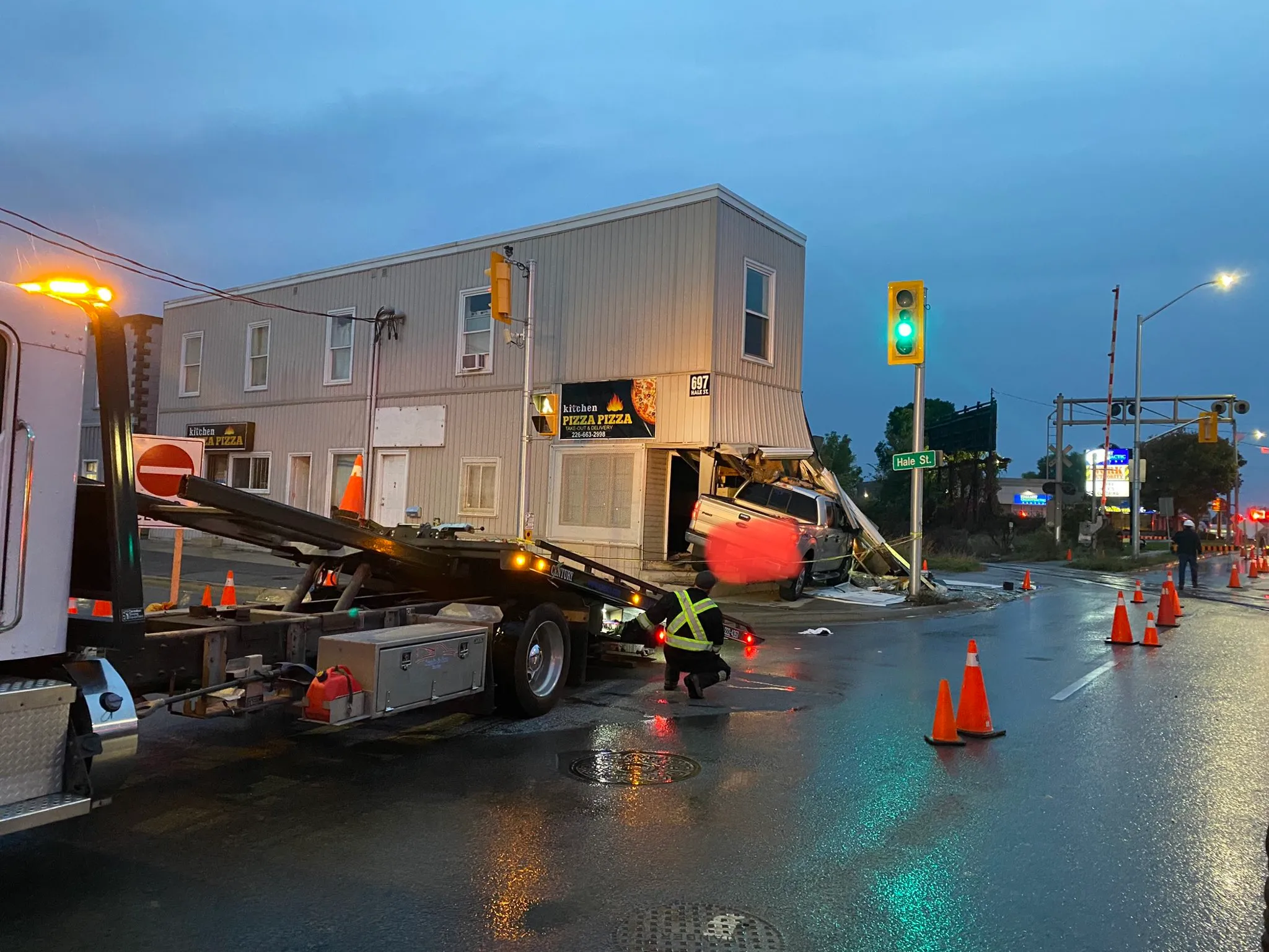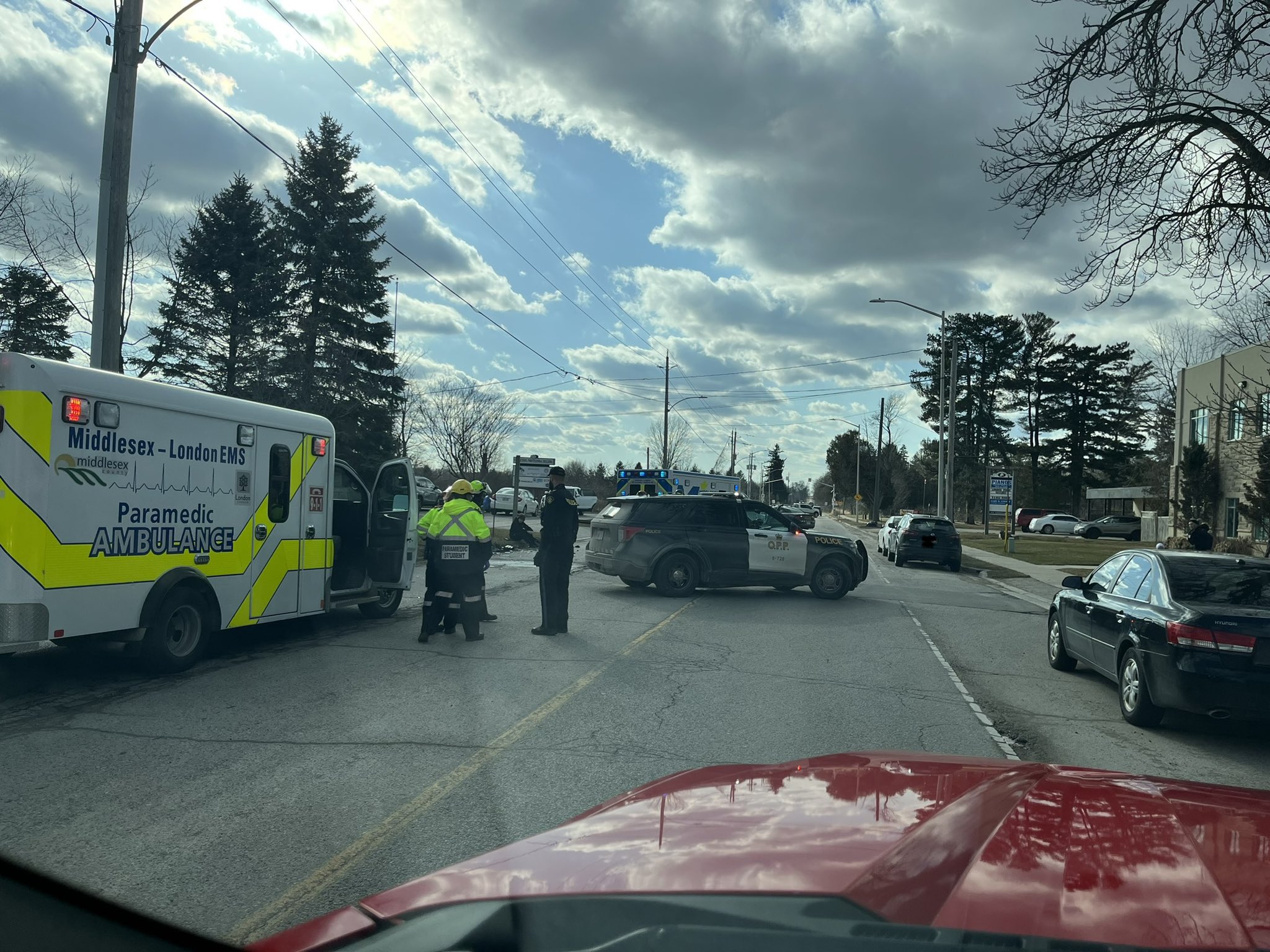Sirens weren’t used, inquest told
By Emilie Smithof The Free Press
A coroner’s inquest was told Wednesday that the drivers of a fire truck and ambulance were not using their sirens when the vehicles collided about 3:24 a.m. April 30, killing a London fireman.
During a day of testimony into the death of Richard Roman, jurors were told that:
• George Lamond, the driver of the fire truck, was found guilty of failing to stop at a stop sign on Curry Street at Mornington Avenue, where the accident happened as both vehicles were responding to an apartment fire.
• Ambulance driver David Quantrill was travelling at 49 miles an hour just moments before the impact.
• The jump seat in which Roman was riding behind the pumper’s cab had no enclosing roof and did not have seat belts or harnesses.
City police Sgt. Harold Pym said both the ambulance and fire truck had emergency lights flashing when the ambulance slammed into the side of the pumper near a rear tire.
Pym, who was following behind the ambulance, said the pumper spun from the impact, rolled on its left side, then on its top, finally coming to rest on its right side, crushing Roman beneath it.
The second occupant in the jump seat, Donald Jeffrey, was thrown clear.
A pathologist testified Roman suffocated and that his lungs were filled with blood. He said Roman, who was pinned about 16 minutes before the pumper carrying 300 gallons of water could be raised, probably died within five to 10 minutes of the accident.
The pathologist said the 32-year-old fireman was probably conscious two or three minutes after the crash.
Pym said he saw the rear of the ambulance lift into the air as the driver tried to avoid collision. He said the pumper did not stop at the sign on Curry Street and estimated the ambulance and pumper had to be within 100 feet of each other before one driver could see the other vehicle because of homes at the intersection.
Jurors were told that police and ambulance personnel responding to the fire at 175 Connaught Ave., had been advised of the possibility someone was trapped in the blaze.
Pym said he travelled part of the way to the fire behind the pumper. He said when he realized the fire truck was going to go along Curry Street; he took another route to try to beat it to the Mornington intersection.
Ironically, the police officer – who didn’t know about the ambulance when he made the decision – said he wanted to get to the intersection first so he could stop traffic and allow the fire truck to pass through.
Just as he was about to get onto Mornington about three blocks from Curry, the ambulance drove past, Pym testified. The officer said he didn’t drive in front of it because he felt there was a “strong possibility” the ambulance and cruiser would crash.
Quantrill said although he was going to a fire rated as an emergency, he didn’t use the ambulance siren because of a Thames Valley Ambulance company policy requiring drivers to file a report if they use a siren between 11 p.m. and 7 a.m.
Randolph MacDonald, a TVA co-owner, said the company established the policy because of a provincial regulation which suggests the use of sirens be restricted to heavy traffic situations.
Traffic is usually “very light” between 11 p.m. and 7 a.m., MacDonald said. He said that citizens complained of noise before the use of sirens was restricted.
MacDonald said TVA policy dictates that drivers not exceed the speed limit except in areas outside the city’s core where drivers may exceed the speed limit up to a maximum of 10 miles. He said the company does not consider the accident area as city core.
Under questioning, MacDonald said he didn’t believe he would have driven the ambulance at the speed which the attendant travelling with Quantrill said it was going. The attendant, Paul Mitchell, said when he checked just after the ambulance drove past Pym’s cruiser, it was travelling at 49 miles per hour.
Mitchell said the ambulance was still travelling at that speed when he saw the pumper as the ambulance was about 50 to 60 feet from the intersection. He estimated the pumper’s speed at between 35 and 40 miles an hour, “maybe even 45”, but not more.
Quantrill said as he approached the intersection, he remembered seeing “a blur” and braking. His next recollection was waking up in hospital.
Lamond said he braked hard at the Curry-Mornington intersection, checked traffic while the pumper was still rolling and drove on. He said he didn’t see the ambulance until he was in the intersection and accelerated to try to avoid it.
Lamond said the use of the siren is left to the discretion of the fire truck operator. Asked why he didn’t see the ambulance when he checked for traffic, Lamond replied: “Because it wasn’t there when I looked.”
He said he was listening to the fire truck’s radio and wasn’t sure if the fireman with him in the cab had warned of the approaching ambulance.
Donald Jeffrey, the fireman riding with Roman in the jump seat, said he felt a “strong deceleration” at the intersection almost the same time he heard Roman yell “there’s an ambulance.”
The inquest continues today.
Sirens weren’t used, inquest told
By Emilie Smithof The Free Press
A coroner’s inquest was told Wednesday that the drivers of a fire truck and ambulance were not using their sirens when the vehicles collided about 3:24 a.m. April 30, killing a London fireman.
During a day of testimony into the death of Richard Roman, jurors were told that:
• George Lamond, the driver of the fire truck, was found guilty of failing to stop at a stop sign on Curry Street at Mornington Avenue, where the accident happened as both vehicles were responding to an apartment fire.
• Ambulance driver David Quantrill was travelling at 49 miles an hour just moments before the impact.
• The jump seat in which Roman was riding behind the pumper’s cab had no enclosing roof and did not have seat belts or harnesses.
City police Sgt. Harold Pym said both the ambulance and fire truck had emergency lights flashing when the ambulance slammed into the side of the pumper near a rear tire.
Pym, who was following behind the ambulance, said the pumper spun from the impact, rolled on its left side, then on its top, finally coming to rest on its right side, crushing Roman beneath it.
The second occupant in the jump seat, Donald Jeffrey, was thrown clear.
A pathologist testified Roman suffocated and that his lungs were filled with blood. He said Roman, who was pinned about 16 minutes before the pumper carrying 300 gallons of water could be raised, probably died within five to 10 minutes of the accident.
The pathologist said the 32-year-old fireman was probably conscious two or three minutes after the crash.
Pym said he saw the rear of the ambulance lift into the air as the driver tried to avoid collision. He said the pumper did not stop at the sign on Curry Street and estimated the ambulance and pumper had to be within 100 feet of each other before one driver could see the other vehicle because of homes at the intersection.
Jurors were told that police and ambulance personnel responding to the fire at 175 Connaught Ave., had been advised of the possibility someone was trapped in the blaze.
Pym said he travelled part of the way to the fire behind the pumper. He said when he realized the fire truck was going to go along Curry Street; he took another route to try to beat it to the Mornington intersection.
Ironically, the police officer – who didn’t know about the ambulance when he made the decision – said he wanted to get to the intersection first so he could stop traffic and allow the fire truck to pass through.
Just as he was about to get onto Mornington about three blocks from Curry, the ambulance drove past, Pym testified. The officer said he didn’t drive in front of it because he felt there was a “strong possibility” the ambulance and cruiser would crash.
Quantrill said although he was going to a fire rated as an emergency, he didn’t use the ambulance siren because of a Thames Valley Ambulance company policy requiring drivers to file a report if they use a siren between 11 p.m. and 7 a.m.
Randolph MacDonald, a TVA co-owner, said the company established the policy because of a provincial regulation which suggests the use of sirens be restricted to heavy traffic situations.
Traffic is usually “very light” between 11 p.m. and 7 a.m., MacDonald said. He said that citizens complained of noise before the use of sirens was restricted.
MacDonald said TVA policy dictates that drivers not exceed the speed limit except in areas outside the city’s core where drivers may exceed the speed limit up to a maximum of 10 miles. He said the company does not consider the accident area as city core.
Under questioning, MacDonald said he didn’t believe he would have driven the ambulance at the speed which the attendant travelling with Quantrill said it was going. The attendant, Paul Mitchell, said when he checked just after the ambulance drove past Pym’s cruiser, it was travelling at 49 miles per hour.
Mitchell said the ambulance was still travelling at that speed when he saw the pumper as the ambulance was about 50 to 60 feet from the intersection. He estimated the pumper’s speed at between 35 and 40 miles an hour, “maybe even 45”, but not more.
Quantrill said as he approached the intersection, he remembered seeing “a blur” and braking. His next recollection was waking up in hospital.
Lamond said he braked hard at the Curry-Mornington intersection, checked traffic while the pumper was still rolling and drove on. He said he didn’t see the ambulance until he was in the intersection and accelerated to try to avoid it.
Lamond said the use of the siren is left to the discretion of the fire truck operator. Asked why he didn’t see the ambulance when he checked for traffic, Lamond replied: “Because it wasn’t there when I looked.”
He said he was listening to the fire truck’s radio and wasn’t sure if the fireman with him in the cab had warned of the approaching ambulance.
Donald Jeffrey, the fireman riding with Roman in the jump seat, said he felt a “strong deceleration” at the intersection almost the same time he heard Roman yell “there’s an ambulance.”
The inquest continues today.

